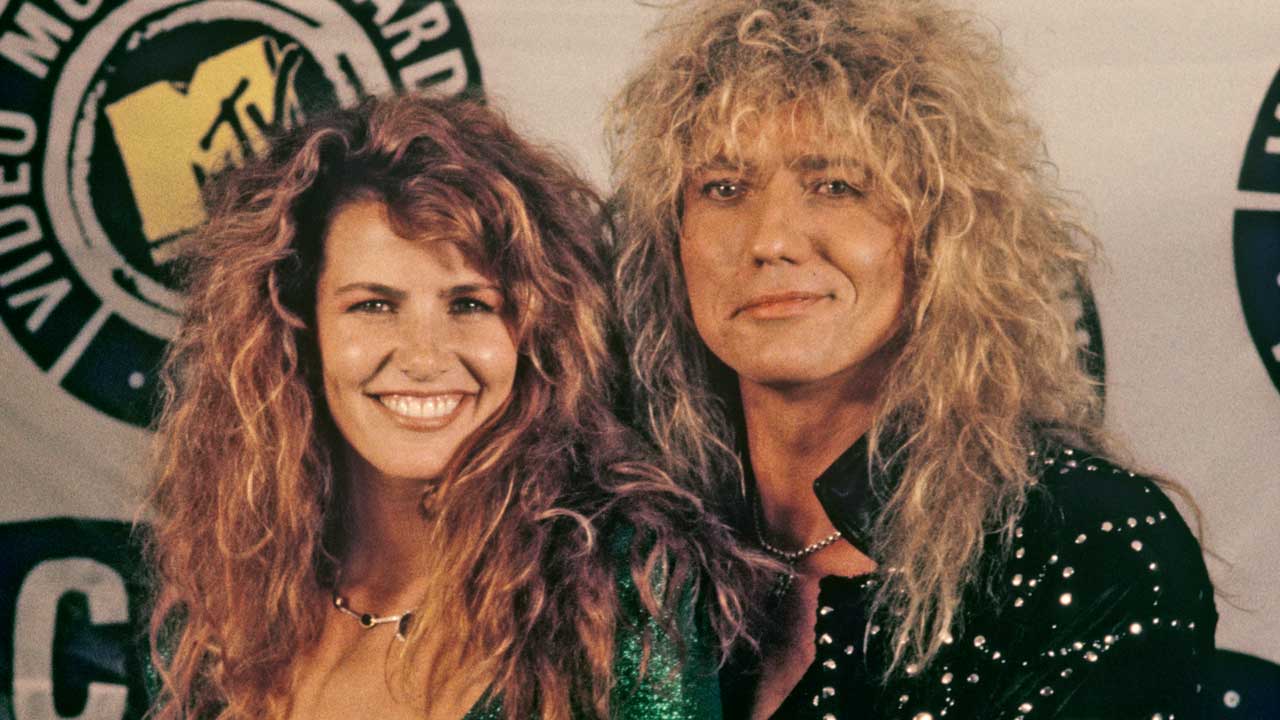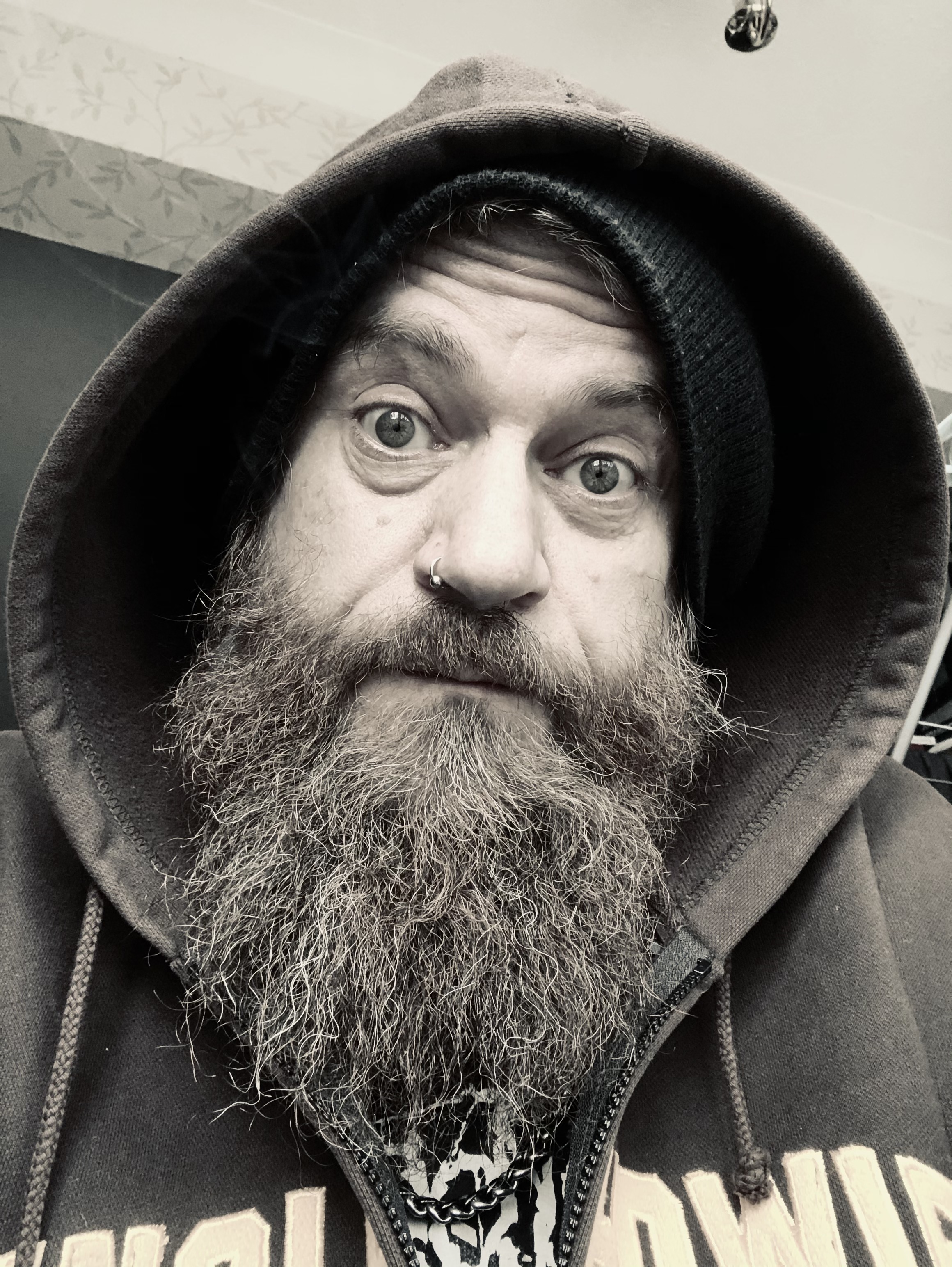For the first few years of the 1980s, David Coverdale was an incredibly busy man.
After the demise of Deep Purple, the band he’d sung with since 1974 and that had made him a star, he embarked on a solo career, which eventually morphed into the tight, swaggering blues rock outfit known, with a lascivious chuckle, as Whitesnake.
Starting in 1978 with the seminal Snakebite EP, featuring one of the band’s trademark songs, a cover of soul standard Ain’t No Love In The Heart Of The City, David’s new project swiftly became one of the most popular hard rock bands in the UK, releasing a steady stream of well-received albums including classics like Lovehunter, Ready An’ Willing and Saints And Sinners.
Always an ambitious man, David was never going to be content with simply following the usual album/tour/repeat schedule when there was a whole world out there waiting to be conquered, and so by the time Whitesnake arrived at their sixth album, Slide It In, he decided that a whole new approach was called for.
“I wanted Whitesnake to be leaner, meaner and more electrifying,” he says. “I felt that we’d done extraordinarily well. We’d made six albums in just a few years. We did fabulously on those albums, but I really felt that we were flogging a dead snake. For me personally, I felt it was time for a change. I didn’t want to stay in the same old traditional blues and pop scenario.
"It was simply my choice as an artist. I wanted to pursue another direction. That was my whole modus operandi. The reason I invited John Sykes into the band was to actually afford that transition, or someone of that style and it happened to be Sykes. And that was it.”
A former member of both NWOBHM stars Tygers Of Pan Tang and the Thunder And Lightning-era incarnation of Thin Lizzy, John Sykes was a prodigious six-string maestro and an entirely different kind of guitarist from the musicians that David had worked with previously in Whitesnake.
Although he didn’t appear on the original version of Slide It In, which still featured Micky Moody and Mel Galley, Sykes' fret-melting heavy metal histrionics were slathered all over the second, remixed version of the album that was produced specifically for the American market that David was so keen to crack. And when the band’s new sound, tailor-made for American radio, led them to a new level of success on both sides of the Atlantic, it became more than apparent that there was simply no going back.
“It was all about the Americanisation of Mrs Coverdale’s little boy,” says the singer. “I’ve never ever been motivated or inspired by what’s popular. All that stuff has gone into the blender, but it’s never been a guiding light. I’ve never thought, ‘Oh, I must change Whitesnake because everybody’s fuckin’ doing it’. It was a series of synchronised elements that came together.
"It had nothing to do with a resurgence in popularity of anything or whatever anyone else was doing. To be honest, when we heard the remixed versions of Slow An’ Easy and the rest, we hated them. But when we heard it for the first time on a dodgy rental car radio, I said, ‘Holy shit, this sounds amazing!’. So that was the beginning. My stock quote at the time was, ‘You can teach an old snake new tricks’!”.
Buoyed by the success of Slide It In in the US and the increased profile that enhanced record sales had brought to his band, David knew that the next album had to be another big step up and a further streamlining of the Whitesnake sound to accommodate the tastes of his newfound fan base.
Produced by Mike Stone and Keith Olsen (the latter responsible for the Slide It In remix), 1987 was written in the south of France by David Coverdale and John Sykes. However, some of the best-known songs were conceived much earlier, including its epic opener, the anthemic Still Of The Night.
“When my mother died I was going through the stuff at her house and found some early demo cassettes,” says David. “One of them was a song that Ritchie Blackmore (Deep Purple guitarist) and I had been working on which was the basic premise of what would become Still Of The Night. It was totally unrecognisable, so Ritchie doesn’t have anything to worry about… neither do I! Ha ha ha!
"I took it as far as I could, then gave it to Sykesy when we were in the south of France, and he put the big guitar hero stuff on there. John hated the blues, so I had to work within those parameters. I manipulated it to be electric blues, but how he performed was fabulous for his time and relatively unique because of the songs. There were a lot of people doing that widdly stuff, but they didn’t have the quality of those songs.”
With a line-up completed by bassist Neil Murray and drummer Aynsley Dunbar, Whitesnake decided to record the new album at Little Mountain Studios in Vancouver, Canada. The recording process was a lengthy and arduous one, not least because David fell ill with a serious sinus infection, which prevented him from singing for long periods and eventually led to a major operation, but the album was slowly pieced together, including the return of Here I Go Again and Crying In The Rain, both tracks that originally appeared on Whitesnake’s 1982 album Saints And Sinners.
On 1987, The former was transformed from surly blues rock strut to an impossibly glossy radio-metal anthem, replete with a suitably over-the-top guitar solo from guest musician Adrian Vandenberg, whose own titular band had had a big hit with the ballad Burning Heart in the US in 1984.
“Recording Here I Go Again for the second time wasn’t my idea, to be honest,” states David. “I very rarely like to go back on any level. I can’t even reverse my car because I hate going backwards so much. Ha ha! But on that occasion it paid off, and huge! We had a bunch of hits with that song in different forms.
"Of course, John Sykes fucking hated it, which is why Adrian was featured on there. He didn’t play one of his better solos on there. It was metal meets country and western! There were two guitarists that I really wanted to work with. One was Michael Schenker, who was fantastic, and Adrian, of course, who I’d met. It was our destiny to work together.”
Released in the first week of April, 1987 was an instant and massive success. Primarily in the US where Whitesnake swiftly became a regular fixture on nascent music television channel MTV with the glossy, high-budget promo clips for the album’s biggest songs, Still Of The Night, Here I Go Again and the ultimate power ballad Is This Love, all of which featured the questionable talents of David’s wife-to-be Tawny Kitaen.
Chiming perfectly with the glamour and bombast that seemed to be universally popular during the 80s, Whitesnake’s music and endearingly unsubtle visual approach led to sales for 1987 of over eight million copies in the US alone. Despite his plans to head onwards and upwards, David was in no way prepared for such a phenomenal level of success.
“Are you kidding?” he laughs today. “We had a plan but, Jesus Christ, are you kidding? My whole plan was to hopefully make an album that sells a bit more than the last one and hopefully I’ll sing a bit better, it all sounds a bit better and we’ll get to the point quicker in the lyrics. It was all just very basic spices for the meal, you know?
"We already had a fabulous relationship with radio after we’d laid the foundation with the Slide It In record, but MTV was an entirety new kettle of fish and they just took to the band hugely. I guess we had all the elements that they wanted. So we had a five-year, unbelievable relationship with MTV and it worked out very, very well for us and in essence it helped us to make that transition that I wanted and then it all became astonishingly successful.”
Caught up in a whirlwind of success and never-ending promotional opportunities, David hardly drew breath between the release of 1987 and the end of the tour that followed the release of the next Whitesnake album, 1989’s Slip Of The Tongue.
After four intense years of being a massive worldwide star, not to mention being the subject of much press speculation and attention as his marriage to Tawny stumbled to a somewhat messy conclusion, he finally laid Whitesnake to rest, albeit temporarily, as the 90s dawned. With some of the biggest-selling rock albums of all time under his belt, it was hard to imagine exactly what David could possibly do next. So he did nothing.
“By the end of it all I was knackered!” he laughs. “It’s important that I’m able to have time to reflect, which is one of the reasons why I live in an extraordinarily quiet community. I bought this house in Lake Tahoe, so that I can immediately get here and feel that the rusty armour of tours and LA and the music business just fall off as I walk into the house.
"After the last show in Japan I had my wardrobe girl burn my stage clothing and told the band, ‘Please don’t be waiting for me to call you for any project. If you get an opportunity, please take it, because I don’t know what is going to happen’. But then I’ve done that a lot over the years. I’ve retired more times than fuckin’ Sinatra! Ha ha!”
This was published in Metal Hammer issue 195.

